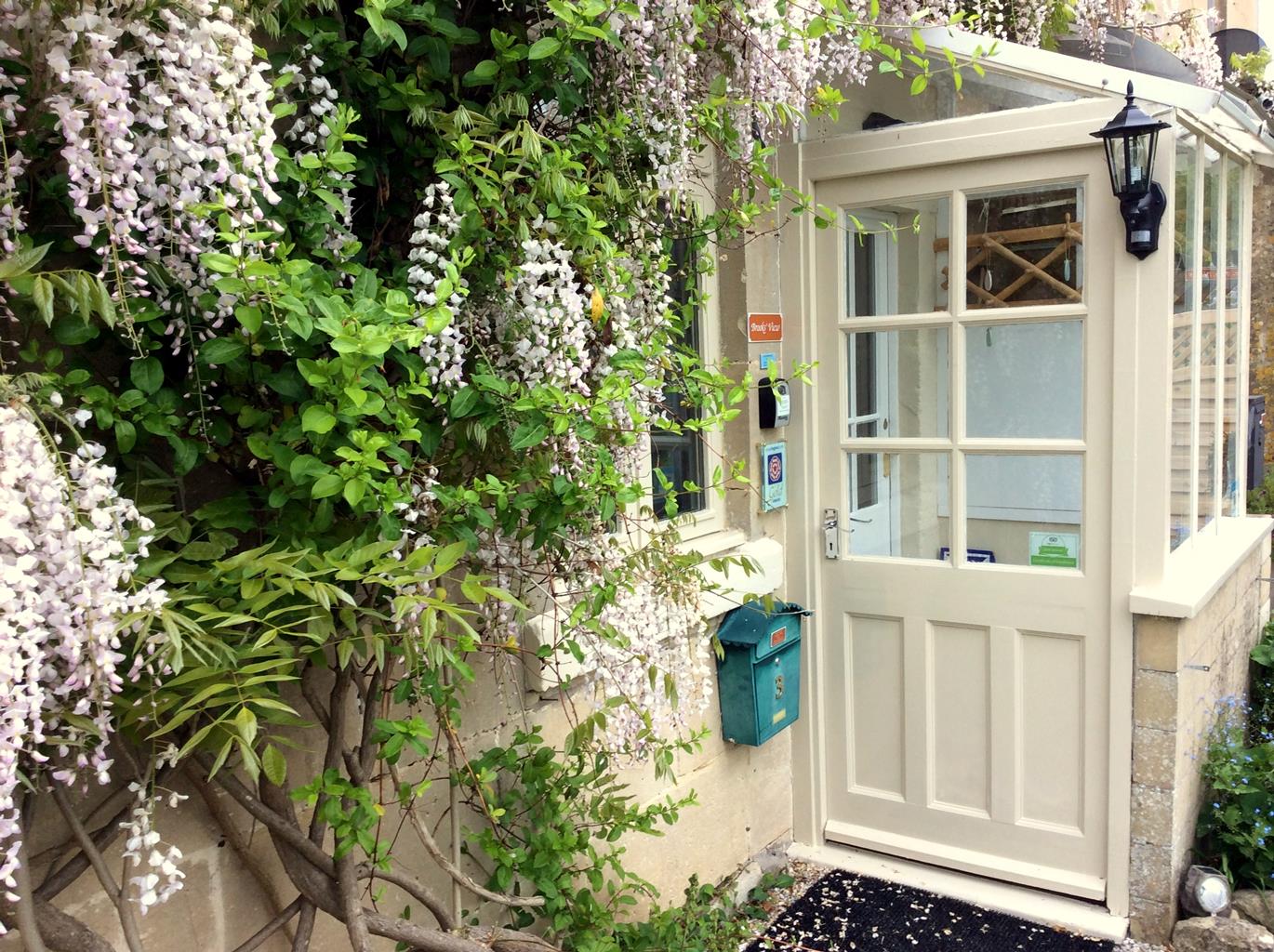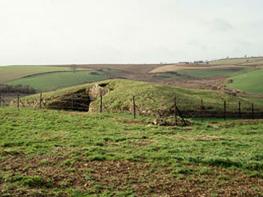These three cottages at Tucking Mill are some 12 minutes’ drive from Bath, and sleep 2 to 3. All…
A Wellow walk

A green valley walk, where Cotswold melds into Mendip
6.5 miles (10.4kms)
About the walk
When you walk through this quiet corner of Somerset, it certainly doesn't strike you as an industrial landscape. As you climb out of the Wellow Valley you might notice some odd conical hills. And then, at Combe Hay, with its lovely medieval manor house, there is some very peculiar 18th-century brickwork. Combe Hay and Wellow were actually at the heart of Somerset's industrial revolution. And the last coal mine here only closed in the 1970s.
Roman coal field
Like so much in Somerset, it started with the Romans. In the Temple of Minerva in nearby Bath, a fire burned – according to some historians, a living coal fire. Certainly by the 16th century the mines were going down. Squashed between the Mendips and the Cotswolds, the Somerset coal field is small and awkward. Many of the veins are vertical, and only a few feet (a metre or so) in width. So coal might be hacked from overhead, on an improvised platform jammed across a narrow shaft. And always, for miner and mine owner alike, there was the threat of cheaper and easier coal coming up the River Avon from Wales. This brings us to the engineering bricks in the field at Combe Hay. To move 100,000 tons of coal a year to Bath a canal was constructed that was ambitious even by the standards of the enterprising 18th century. Over its length of just 10 miles (16km), from Paulton Basin to Bath, the Somersetshire Coal Canal had two aqueducts and a tunnel. Furthermore, there was the problem of the 165ft (50m) climb on to Combe Hay Hill. The solution was, in effect, an underwater elevator. A barge on the upper canal entered a floating metal box called a caisson. The caisson was sealed, and water pumped in until it started to sink. It sank for 50ft (15m) to the bottom of the shaft. Its door was then matched up to a door in the base of the shaft; both doors were opened; and the barge floated out. The process would take seven minutes, unless the caisson got stuck. The ground around the caisson shaft is fuller's earth, which expands when wetted, and this may have caused the sides of the shaft to bulge inwards. The caissons were abandoned after only two years and replaced with an inclined plane. The southern branch of the canal, through Wellow to Radstock, was never completed. Instead, a horse-drawn tramway carried the coal out. Both canal and tramway were replaced by the railway, which in its turn has been superseded by motor roads.
Walk directions
Head out past the church, under a viaduct, and up to pass Wellow Trekking. In another 110yds (100m) a narrow, rutted track starts just above the road. Where it becomes unclear, keep going, to the hedge ahead. The track continues above it, and runs down through a wood. At its foot fork left on the older track, which turns up left to pass under a railway bridge. (Note: no access to this track from the railbed cycleway from Wellow.)
Just before Lower Twinhoe Farm turn left into a signposted green track. At the hilltop the track fades into a field. Bear right, before hilltop houses, to a small gate and then a larger one. Turn right along the farm's driveway to a lane. Turn left, then down right at Middle Twinhoe Farm, and bend left towards Upper Twinhoe. Just before this farm a signed track descends to the right.
After 130yds (119m) turn left through a bridleway gate and along a field top. The path then slants down through scrubby woodland towards Combe Hay. From the wood edge follow the lower edge of a field to a stone bridge into the village. Follow the main lane left, to pass the Manor House.
After the last house of Combe Hay, find a gap in the wall on the left. Fork right, down to the Cam Brook, and follow it to a road bridge (Combe Hay Bridge). Cross it and continue with the stream down on your right through a field and a wood. Follow the stream along another field to a little stream and stile, then along the foot of a short field to a hedge gap.
Don't go through this hedge gap, but turn left up the field-edge to a stile on the right instead. Slant up across the next field to its far top corner and a nettly way between high thorns. At the top of this bear right in a rutted track to a lane. Turn left, up to White Ox Mead Farm, and follow the lane to the right for another 60yds (55m) to a kissing gate on the right. Slant up to a kissing gate, and turn up a tarred track to where it divides near a shed without walls.
Keep ahead on a track along the hill crest. In 0.25 miles (400m) take a waymarked stile on the right. Slant down the field ahead, under power lines, to a stile above its bottom corner. Cross above a hedge corner ahead to a gate just beyond. Down through this, turn left across the field top and down its edge to the street leading into Wellow.
Additional information
Byways, stream sides and some field paths, several stiles
Grassy hillsides and valleys
Mostly pasture
AA Walker's Map 25 Bristol, Bath & The Mendips
Street parking in village centre, or large car park in Station Road
None on route
WALKING IN SAFETY
Read our tips to look after yourself and the environment when following this walk.
Find out more
Also in the area
About the area
Discover Somerset
Somerset means ‘summer pastures’ – appropriate given that so much of this county remains rural and unspoiled. Ever popular areas to visit are the limestone and red sandstone Mendip Hills rising to over 1,000 feet, and by complete contrast, to the south and southwest, the flat landscape of the Somerset Levels. Descend to the Somerset Levels, an evocative lowland landscape that was the setting for the Battle of Sedgemoor in 1685. In the depths of winter this is a desolate place and famously prone to extensive flooding. There is also a palpable sense of the distant past among these fields and scattered communities. It is claimed that Alfred the Great retreated here after his defeat by the Danes.
Away from the flat country are the Quantocks, once the haunt of poets Samuel Taylor Coleridge and William Wordsworth. The Quantocks are noted for their gentle slopes, heather-covered moorland expanses and red deer. From the summit, the Bristol Channel is visible where it meets the Severn Estuary. So much of this hilly landscape has a timeless quality about it and large areas have hardly changed since Coleridge and Wordsworth’s day.
Nearby stays
Restaurants and Pubs
Nearby experiences
Recommended things to do
Why choose Rated Trips?
Your trusted guide to rated places across the UK
The best coverage
Discover more than 15,000 professionally rated places to stay, eat and visit from across the UK and Ireland.
Quality assured
Choose a place to stay safe in the knowledge that it has been expertly assessed by trained assessors.
Plan your next trip
Search by location or the type of place you're visiting to find your next ideal holiday experience.
Travel inspiration
Read our articles, city guides and recommended things to do for inspiration. We're here to help you explore the UK.













